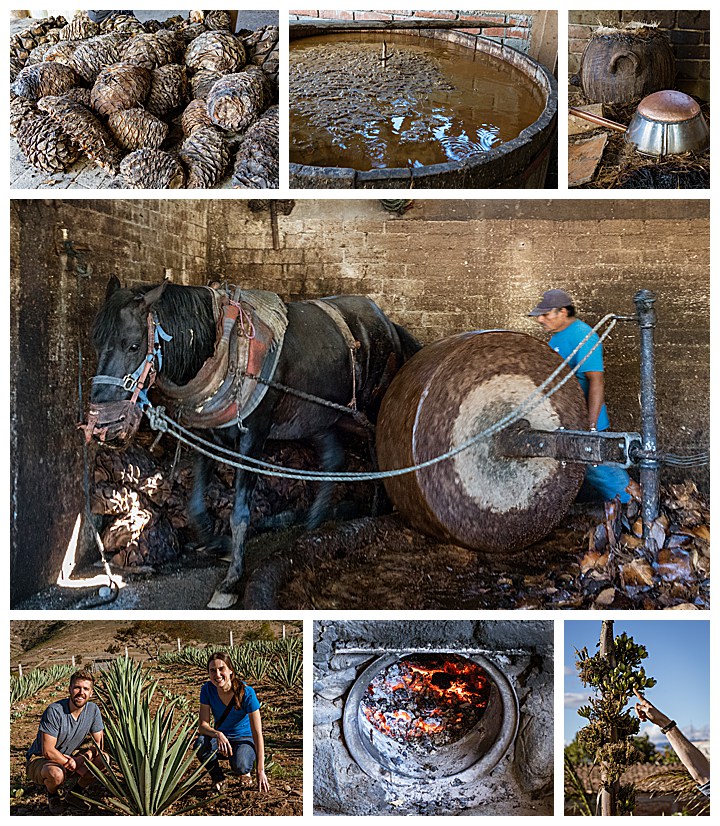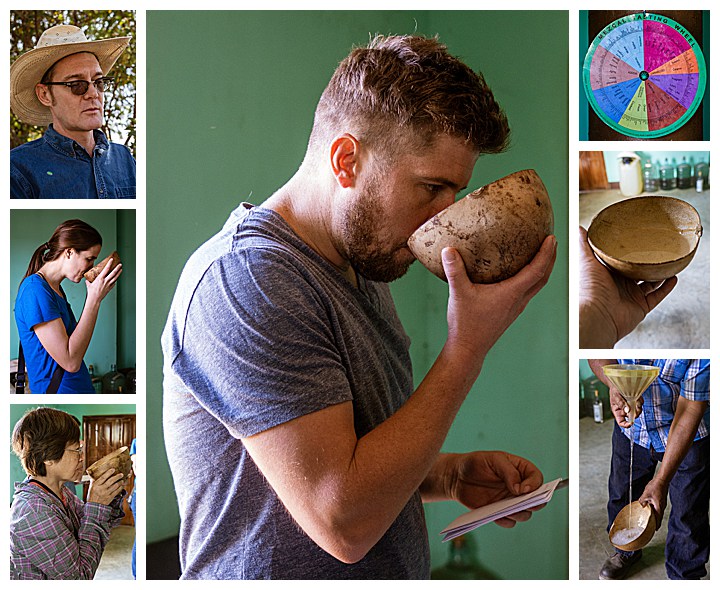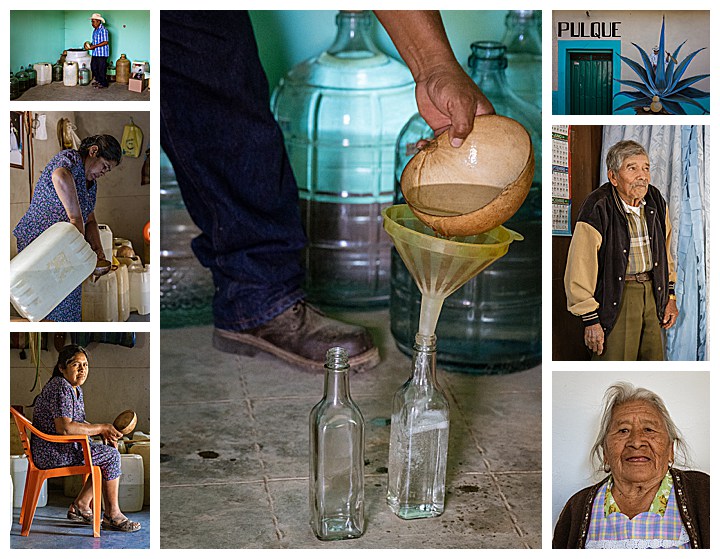
When I think of Mexico, I typically associate it with moles, salsas, tostadas, beer… and tequila. When we asked friends what they would like us to bring them back from Mexico, tequila was the only thing that came to their mind.
It turns out that Oaxaca is most known for mezcal, and tequila is merely one kind of mezcal, made only in one region of Mexico. Much like the word champagne is a name only legally allowed to be used for sparkling wine from the Champagne region of France, the name tequila may only be used for mezcal made from the blue agave plant in the state of Jalisco, Mexico.
We decided we should explore the mezcal made in the state of Oaxaca in tiny rural Zapotec villages, where families have refined their mezcal recipes over generations. We therefore joined Mezcal Educational Tours for a full day of exploring mezcal distilleries (known as palenques), with plenty of tasting along the way.
At our stop in San Dionisio (above), we saw the agave from seed to fermentation. The agave plant (lower-left, with the other couple who joined us on this tour), grows a tall stalk that then produces seeds (lower-right). These seeds are used to plant new agave plants for future mezcal production.
When harvested, the piña is removed from the center of the plant, and stacked in a pile to be processed further (upper-left). The piña are then ground up, with this site using a horse and stone wheel (center) for that work. The ground piñas are then combined with water in large vats (upper-center), and allowed to ferment from 3 to 10 days, depending mostly upon the outside temperature (shorter time needed during summer).
Fires are then stoked with wood in an oven (lower-center), and the mezcal obtained through distilling in the copper bottom pot (upper-right).

In a distillery in Santa Catarina Minas, we tasted 14 different varieties of mezcal. Each is made with slight variations that a sensitive palate could discern, though to be honest, only a couple stood out to my own taste buds. They vary from the type of agave plant used, or the season (winter mescal has a somewhat different taste than summer mescal), or infusion of various herbs.
One large gourd (a Jicara) was filled with each variant of mezcal, and then passed around to everyone in the room, as shown above. Sometimes a rag was used to wipe out a gourd before filling it, but mostly they were just pulled off a stack, and then replaced there when empty. No dainty separate wine glasses for mezcal drinkers!
There was a circular chart describing various possible taste variants for those who chose to try to describe the subtle tastes each mescal (upper-right), though none of us could even come close to such categorizing. The producer showed us how he pours mezcal in a stream from a funnel (lower-right) to determine the alcohol level. Below 40% alcohol, no bubbles are formed. Above 60%, they form, but quickly dissipate. Their target is between those two levels, and a trained eye can tell from the number of bubbles and rate of dispersal, just what the alcohol level is.
We were told that Americans like the alcohol level to be between 45% and 50%, but that Mexicans call that “white people mezcal,” and rarely drink anything below 65% alcohol themselves.

When we purchased any mezcal, it was filled on the spot for us. Poured out of the same plastic jugs we had been tasting from (upper-left), it was funneled into a bottle (center), and then an adhesive label attached.
Our final stop was at a pulque distillery in Santiago Matatlán. Though pulque is also made from the agave plant, it uses a completely different process, scooping out the pińa to force the plant to produce a sap, which forms the basis of the liquor. We were told that the woman of the distillery (bottom-right) is only one week shy of her 90th birthday, and that she drinks pulque every day…
